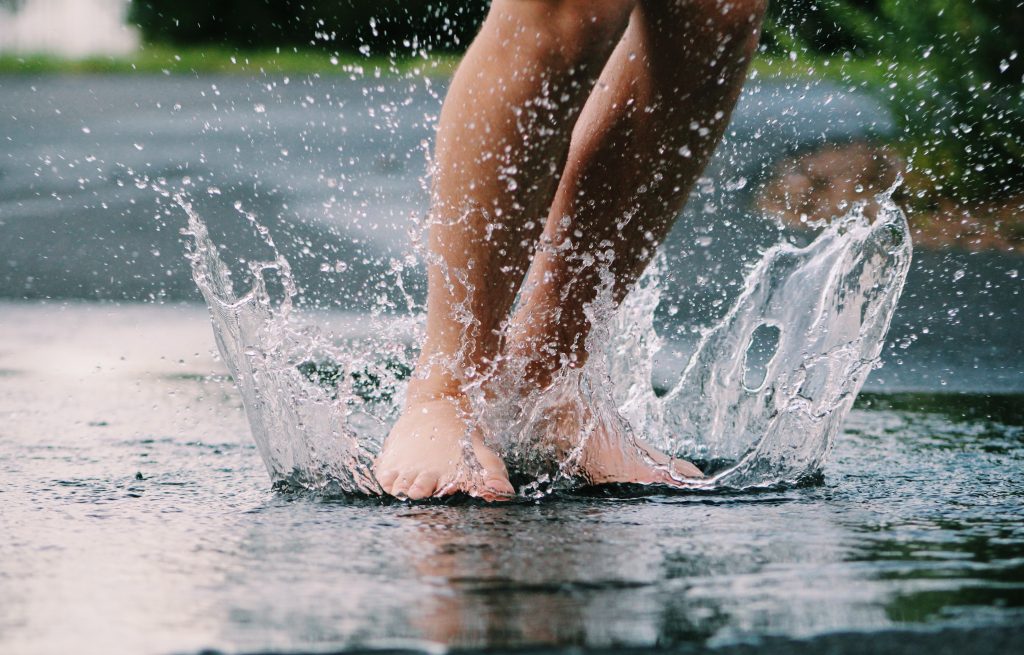It’s common to have cracked, rough, dry, or dead skin on feet. Our feet have very few oil glands compared to other parts of our body. They also experience daily wear and tear.
Luckily, there are some simple home remedies that you can use to relieve dead skin on your feet. Let’s discuss common causes, treatment methods, and some prevention tips for dead skin on feet.
Causes of Dead Skin on Feet
Loose, cracked, or dead skin on feet is a naturally exfoliating method of our body to shed dead skin cells. Dead skin on feet can build up due to several reasons, including the following.
1. Lack of Moisture
Flaking, cracked, and dry skin is common on the sole and heel as these places contain fewer oil glands and don’t produce enough moisture. An NCBI study suggests that the dead skin spots have extremely lower levels of hydration.
2. Humidity and Heat
Wearing closed shoes such as boots and sneakers creates too much humidity and heat for your feet. Such an environment draws moisture from your skin and leads to cracked, thick, and dead skin buildup.
3. Irritation
Wearing poorly fitted shoes or standing for too long can put pressure on your feet. Resultantly, areas with too much pressure become calloused and dry.
4. Aging
Age is yet another factor that takes away the ability of your skin to retain water. It becomes less plump and thinner, and that’s why older adults are more likely to experience dead skin buildup on feet.
5. Soaps
Many body washes and soaps contain irritants and harsh chemicals that can decrease the amount of moisture from the skin of your feet. Cleaning them using such products or not washing excess soap can lead to dead skin.
There are some medical conditions as well that can cause dry or dead skin on the feet. These medical conditions include the following:
6. Eczema
Eczema is basically a group of medical conditions that lead to skin inflammation. It can develop on any part of the body, including the feet. Itchy, crusty, and dry patches on the skin are some common symptoms of eczema.
7. Athlete’s Foot
Athlete’s foot is actually a medical condition that refers to a fungal infection. It leads to scaly rashes underneath the foot and between toes.
8. Hypothyroidism
Hypothyroidism is a medical condition in which the thyroid glands of the patients lose their ability to regulate the sweat glands present in their feet. That’s why many patients with hypothyroidism develop dry feet.
9. Diabetes
Uncontrolled diabetes can damage the peripheral nerves, and such a condition is called neuropathy. According to NCBI, this medical condition can also affect the very nerves responsible for regulating moisture and oil in feet and cause dead skin on feet.
How to Get Rid of Dead Skin on Feet?

1. Exfoliate
This method involves a chemical or physical exfoliator to remove the dead skin on the feet. Chemical exfoliators come in the form of thin liquids or lotions, and they contain ingredients that help dissolve the dry skin cells.
Some of the popular ingredients include:
- Alpha hydroxy acid
- Lactic acid
- Glycolic acid
Physical exfoliators include the following:
- Electronic callus removers
- Body brushes
- Foot scrubs
By mixing sugar, warm water, and honey, you can make your own foot scrubs at home as well.
2. Pumice Stone
Scientific studies suggest that you can use a pumice stone (natural lava stone) to remove dead skin cells on your feet—heat freshwater and dip pumice stone in it for 5 to 10 minutes.
Soak your feet in hot water for about 15 to 15 minutes. Move the pumice stone in a sideways or circular motion gently on dead skin. Make sure that you only remove the surface of the dead skin. Apply oil or lotion on the affected areas to keep them soft.
Important Note: Never use the pumice stone on sore or injured spots.
3. Paraffin Wax
It’s also possible to use paraffin wax to get rid of dead skin on the feet. All you need to do is melt the wax using a saucepan and transfer it to a big container in which you can dip your feet. You’ll need to repeat this process several times in order to apply multiple layers of wax to your feet.
Once the wax has hardened, remove it from your feet gently. The wax will also remove dead skin on your feet, and they will feel soft. However, you shouldn’t use this method if:
- You have an open sore or rash on your feet.
- Your blood circulation is poor.
- You have a medical condition such as diabetic neuropathy when you lose feeling in your feet.
4. Moisturizer
Moisturizing your feet regularly is a great way to get rid of dead skin and prevent it from happening again. It’s especially helpful if you do it after using a pumice stone or exfoliator. It’ll allow the skin of your feet to lock in moisture.
Avoid using moisturizers, creams, and lotions containing artificial colors, fragrances, and alcohol because they can worsen the dead skin. Use the products that contain:
- Humectants such as hyaluronic acid, aloe, and urea
- Occlusives like coconut oil, lanolin, and petrolatum
- Emollients that come with plant-based oil and butter
5. Use Moisturizing Socks
You can also wear moisturizing socks that are lined, especially before going to bed. These socks are lined with vitamins and natural oils to keep your foot skin hydrated. Let your feet dry after taking these socks off.
Once the feet have dried, gently rinse the areas with dead skin to remove the dead skin cells. Making a habit of wearing moisturizing socks will also prevent dead skin from forming again.
Tips to Prevent Dead Skin on Feet
You can use the following tips to prevent dead skin on your feet.
- Use shoes that fit properly.
- Practice excellent foot hygiene, including removing dead skin by cleaning your feet thoroughly and moisturizing your feet regularly.
- Use warm water for foot soaks, baths, and showers instead of hot water.
- Gently pat your feet dry using a clean and soft towel instead of rubbing them vigorously.
- Avoid body washes, soaps, and lotions with artificial coloring, fragrances, and alcohol.

